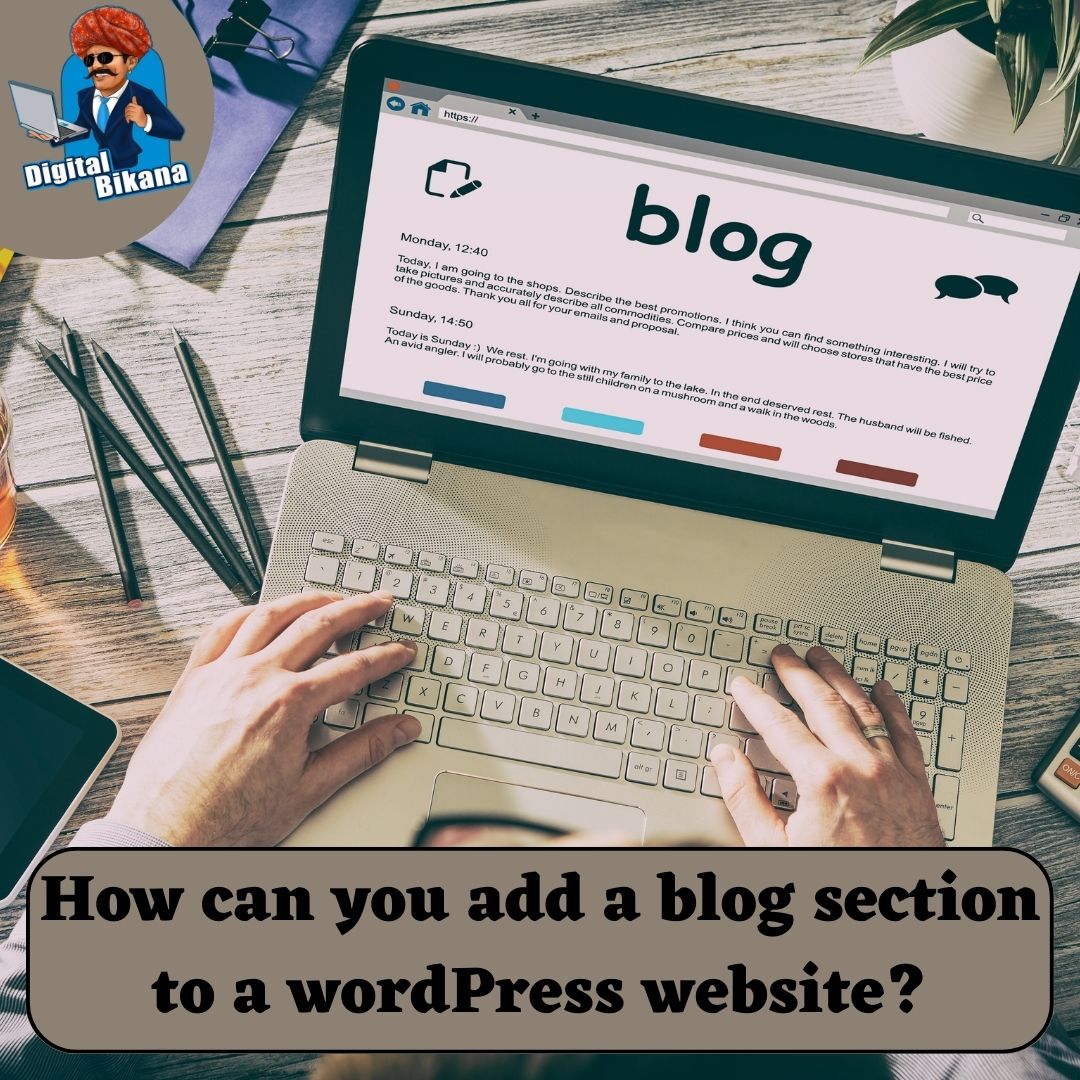How can you add a blog section to a WordPress website?
In this article we are going to talk about How can you add a blog section to a WordPress website? Integrating a blog section into your WordPress website is an effective way to engage your audience, share valuable content, and establish your online presence. In this in-depth guide, we will walk you through the process of adding a blog section to your WordPress website.
How can you add a blog section to a WordPress website?
From creating a dedicated blog page to customizing its appearance, configuring permalinks, installing blogging plugins, publishing compelling posts, promoting your content, and monitoring performance, we will cover each step in detail. By the end of this guide, you will have the knowledge and tools to create a dynamic and successful blog section on your WordPress website.
Step 1: Set Up a Blog Page
To begin, create a dedicated blog page for your WordPress website. Access your WordPress dashboard, navigate to “Pages,” and click on “Add New.” Give your page a relevant title such as “Blog,” “Articles,” or “News.” Save the page to create the foundation for your blog section.
Read Also: What is a Featured Image in WordPress and how can you set it for your posts?
Step 2: Customize the Blog Page
Customizing the appearance of your blog page is essential for a cohesive and visually pleasing user experience. Use the WordPress Customizer, located under the “Appearance” menu, to modify various aspects of your blog page. Adjust the layout, colors, typography, and background to align with your website’s branding and overall design.

Step 3: Configure Permalink Structure
Configuring the permalink structure is crucial for search engine optimization and user-friendly URLs. In your WordPress dashboard, go to “Settings” and click on “Permalinks.” Choose a structure that includes the post name, as it is both SEO-friendly and descriptive for visitors. Save your settings to update the permalink structure.
Step 4: Install a Blogging Plugin
Enhance the functionality of your blog section by installing a WordPress blogging plugin. Several options are available, such as “Yoast SEO,” “Jetpack,” and “WPForms.” These plugins provide features like search engine optimization tools, social sharing buttons, comment management systems, and email subscription forms. Select a plugin that suits your requirements and activate it.
Step 5: Create Categories and Tags
Organize your blog posts by creating categories and tags. Categories help classify your content into broader topics, while tags provide more specific descriptors. Navigate to the “Posts” section in your WordPress dashboard and click on “Categories” and “Tags.” Create relevant categories and tags that align with the topics covered in your blog posts.
Step 6: Compose and Publish Blog Posts
With the foundational elements in place, it’s time to create and publish compelling blog posts. In your WordPress dashboard, go to “Posts” and click on “Add New.” Utilize the powerful WordPress editor to write your blog post, format text, insert images, and embed media. Structure your content using headings, paragraphs, and bullet points for improved readability. When satisfied, click “Publish” to make your post live.
Read Also: How can you add video content to a WordPress website?
Step 7: Promote Your Blog Posts
Promoting your blog posts is crucial for attracting readers and increasing traffic to your website. Utilize various channels, including social media platforms, email newsletters, and online communities, to share your content. Incorporate social sharing buttons into your blog posts to encourage readers to share them. Engage with your audience by responding to comments and fostering discussions around your content.
You can also checkout this website designing institute to learn digital marketing course by enrolling in our course Or Contact Digital Bikana on +91-8949483728
Step 8: Monitor and Analyze Blog Performance
Regularly monitor the performance of your blog section using analytics tools like Google Analytics. Gain insights into your website’s traffic, page views, bounce rates, and user behavior. Analyze this data to understand which blog posts resonate with your audience, identify popular topics, and refine your content strategy accordingly. Continuously monitor and optimize your blog section to maximize its impact.

Conclusion
By following the step-by-step instructions outlined in this comprehensive guide, you can seamlessly add a blog section to your WordPress website. From setting up a dedicated blog page to customizing its appearance, configuring permalinks, installing blogging plugins, publishing engaging posts, promoting your content, and monitoring performance, you have the tools to create a vibrant and successful blog section. Embrace the power of blogging to connect with your audience, establish your expertise, and enhance your online presence. So, Now I hope you have understood about how can we add a blog section to a WordPress website.

